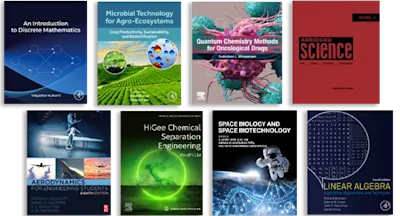
Photoelectrochemical and Enzymatic Conversion of CO2 into Fuels
A Shift Toward Net Zero Energy Landscape
- 1st Edition - October 24, 2025
- Latest edition
- Editors: Rohit Srivastava, Bishnu Prasad Bastakoti
- Language: English
Photoelectrochemical and Enzymatic Conversion of CO2 into Fuels: A Shift Towards Net Zero Energy Landscape introduces a comprehensive guide on the effective utilization of re… Read more

This will be a welcomed resource for researchers, students, academicians, engineers, and environmental experts and agencies studying the effects and benefits of the conversion of carbon dioxide into fuels for sustainable and renewable energy.
- Delivers a wealth of knowledge on cutting-edge technologies using low-cost abundant catalysts for photoelectrochemical reduction of CO2
- Focuses on the design and development of novel catalysts for electrochemical, photochemical, enzymatic, and artificial photosynthesis approaches for CO2 reduction into green fuel and value-added chemicals
- Addresses major challenges and issues for greenhouse gases emission worldwide
2. Electrochemical reduction of CO2
3. Photochemical reduction of CO2
4. Enzymatic reduction of CO2
5. Artificial photosynthesis: Sunlight, Water and CO2 into fuels
6. Advance pervoskite-based catalysis for CO2 conversion
7. Phosphorene based catalyst for CO2 conversion
8. Polymer based-catalyst for CO2 conversion.
9. Transition metal-based single atom catalyst for CO2 conversion
10. Blue-titania catalyst for CO2 conversion
11. Advance carbon-based nanomaterial for CO2 conversion
12. Mxene-Transition metal compound sulphide and phosphide; hetero nanostructures for CO2 conversion
13. Semiconductors materials for CO2 conversion
14. Photobiological CO2 reduction: Introduction and fundamental concept
15. Technoeconomic analysis of electrochemical and photoelectrochemical reduction of CO2
16. Scalability aspects and real-world implementation of electrochemical and photoelectrochemical processes for CO2 reduction
- Edition: 1
- Latest edition
- Published: October 24, 2025
- Language: English
RS
Rohit Srivastava
Rohit Srivastava is a Senior Assistant Professor at the Department of Petroleum Engineering, Pandit Deendayal Energy University, Gandhinagar, India. His research focuses on green hydrogen and carbon dioxide reduction into green fuels.
BB
Bishnu Prasad Bastakoti
Bishnu Bastakoti is an Associate Professor at North Carolina Agricultural and Technical State University, USA. He has published over 100 peer-reviewed articles. He is working on a broad design challenge to control various structural properties, such as porosity, crystallinity, and pore size, in porous inorganic nanomaterials. He is especially interested in using highly porous nanostructured materials in catalysis and energy conversion.